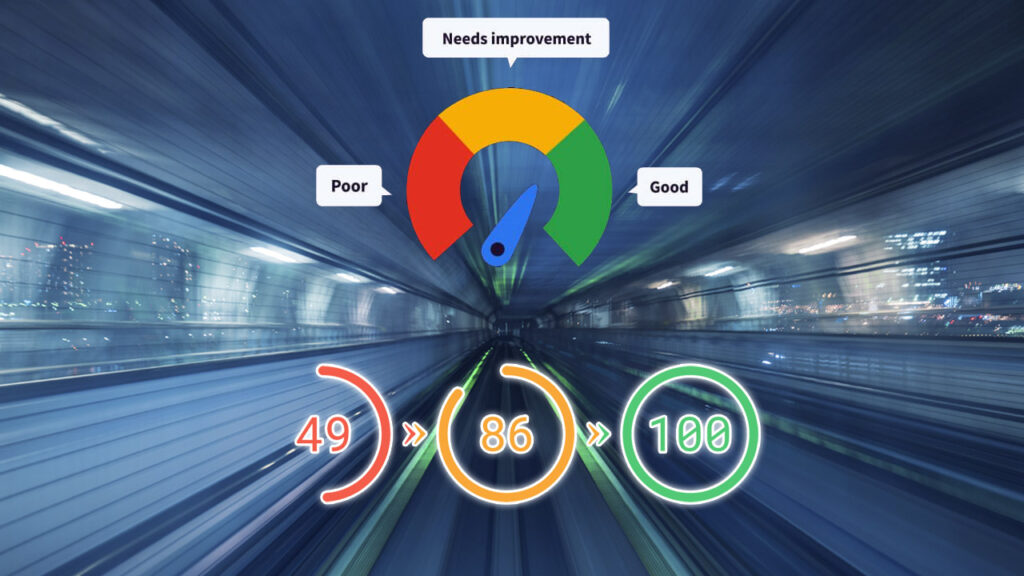
Many website owners are struggling with a low PageSpeed Insights score which often results in a poor user experience as well as a lower ranking in the search engine results which directly affects their conversion rate. Are you also suffering from the same problem?
Table of Contents
Here, we will discuss the 7 most powerful strategies to ensure a good PageSpeed Insights performance. Before diving into the solutions, first, we will cover every detail of PageSpeed Insights for your better understanding.
If you are from a non-coding background, that’s completely fine. We will mention some automation tools that a non-coder like you and me can easily use to improve the PageSpeed performance.
What Is Google PageSpeed Insights?
Google PageSpeed Insights (PSI) is a free and easy-to-use tool developed by Google to analyze a website’s PageSpeed performance based on the core web vitals performance for mobile and desktop versions.
The Google PSI provides a score of a website’s performance on a scale of 0 to 100, while 100 indicates the best performance. The main advantage of Google PageSpeed Insights is it also provides you the suggestions for improving the PageSpeed performance.
Let’s see the boundary values based on that Google can categorize the website’s PageSpeed performance.
| PageSpeed Insights Score | Remark |
| 90 and above | Good PageSpeed performance |
| Between 50 and 89 | Average PageSpeed performance |
| Below 50 | Poor PageSpeed performance |
Note: If you are also aiming to achieve a 90+ PageSpeed Insights score, you need to implement all PSI suggestions in your website. However, these may involve a lot of coding solutions. However, with the help of RabbitLoader, you can do this without having any coding knowledge.
The Benefits Of Having A Good PageSpeed Insights Score

Let’s discuss the benefits of having a good PageSpeed Insights score.
A Better User Experience
PageSpeed is a parameter that can make the user’s first impression of your website. No matter how much effort you put into the website design, if a user needs to wait longer to render the page’s content, they will leave the website.
A 90+ PageSpeed Insights score indicates a good PageSpeed performance, resulting in a better user experience. If the users are satisfied with the website’s performance, there is a possibility to increase user engagement, which leads to improving the website’s average on-page time on Google Search Console.
A Desirable Conversion Rate
Every website owner’s ultimate goal is to achieve a desirable conversion rate. Conversion rate indicates the number of visitors who convert into potential leads by finishing desirable tasks like making a payment, filling out online forms, and more.
While a good PageSpeed Insights score leads to a better user experience, it also helps you to achieve a desirable conversion rate.
A Higher Ranking In SERPs
Among the 200 ranking factors, PageSpeed is one of the essential factors in the ranking algorithm. Thus, achieving a good PageSpeed score leads to a higher ranking in the Search Engine Result Pages (SERPs) which can increase the website’s organic traffic.
The 7 Powerful Techniques To Improve The PageSpeed Insights Score
If you are aiming to achieve a 90+ PageSpeed Insights score, you must follow the strategies below. We will also mention some automation tools to make this process easier.
Optimize The Large-Sized Images
Adding too many high-resolution images can slow down your website by increasing the total page size. Image optimization is the only way to mitigate this problem and achieve a good PageSpeed performance. To reduce the image size losslessly, you need to convert them into the next-gen formats (WebP and AVIF).
Several image optimization tools are there like RabbitLoader, EWWW image optimizer, and others to optimize your images.
Reduce The Total Page Size
Reducing the total page size is one of the effective ways to improve the PageSpeed Insights score. In the development process, many unnecessary comments and large variable names are added to the coding file, which increases its size and the page loading time.
Minification is the process of reducing the size of coding files by removing unnecessary characters from resource files like HTML, CSS, and JavaScript. Manually minifying resource files needs basic coding knowledge.
However, with the help of an automation tool like HTML minifier, RabbitLoader, and others you can easily do this without having coding knowledge.
Add Lazy Loading
Lazy loading allows for rendering above-the-fold content and the remaining content will load when the browser needs them. It improves a website’s PageSpeed performance, which in turn increases its PageSpeed score.
Manually implementing lazy loading requires a fair amount of knowledge of HTML and time. But with the help of an automation tool like RabbitLoader, you can implement lazy lading within a few clicks.
Implement A Browser Caching Mechanism
Implementing a browser caching mechanism is one of the most traditional web optimization strategies. Browser cache can store the static files locally so that when a user revisits your website, it will directly retrieve from the browser cache instead of the origin server.
To implement an efficient browser caching mechanism, you need to use a cache plugin like WP Rocket, RabbitLoader, W3 Total Cache, or others and improve the pageSpeed Insights score.
Use CDN Caching
Increasing the physical distance between a user and the origin server can negatively affect the page loading time. However, using a Content Delivery Network (CDN) can reduce the distance by spreading the static content among the proxy servers, reducing the network latency.
Using an external CDN can be cost-effective. However, if you have already installed RabbitLoader for other optimization purposes, it will also take care of this as it has an inbuilt CDN cache.
Optimize CSS File
Without optimizing the CSS files, achieving a good PageSpeed score can be challenging. There are two ways you can optimize your CSS file more efficiently.
- Reducing the unused CSS
- Generating critical CSS
Having too many unused CSS (the CSS rules that are not utilized in the current website design) can typically increase the page file size and slow down the website’s PageSpeed performance. By removing them from the CSS file, you can significantly improve the page loading time.
On the other hand, generating critical CSS plays a significant role in CSS optimization. However, due to it’s difficulties, most of the optimization plugins avoid this. Thankfully RabbitLoader is there to optimize your CSS file efficiently by removing the unused CSS and generating the critical CSS file.
Defer The Non-Critical Javascript Functions
JavaScript files are often considered render-blocking resources as it block the main thread works which increases the Total Blocking Time (TBT), resulting in slowing the page rendering process.
Most of the JavaScript functions are not needed during the initial page loading time. By deferring the non-critical JavaScript functions you can instruct the browser to execute them when the parsing is completed, improving the page rendering process.
To optimize JavaScript files manually, you need expertise in web development. However, with the help of an automation tool like Rabbitloader or WP Rocket, you can easily optimize your JavaScript file.
Conclusion
While a good PageSpeed score is beneficial for a better user experience and a higher ranking in SERPs, due to poor PageSpeed performance, you may lose potential visitors. Here, we have discussed the most powerful 7 techniques to improve the website’s PageSpeed performance and achieve a good Google PageSpeed Insights score.
Here we also have mentioned some automation tools that you can use to get a non-coding solution. So, if you are also trying to improve the PageSpeed Insights score, implement the above 7 strategies and enhance the user experience.